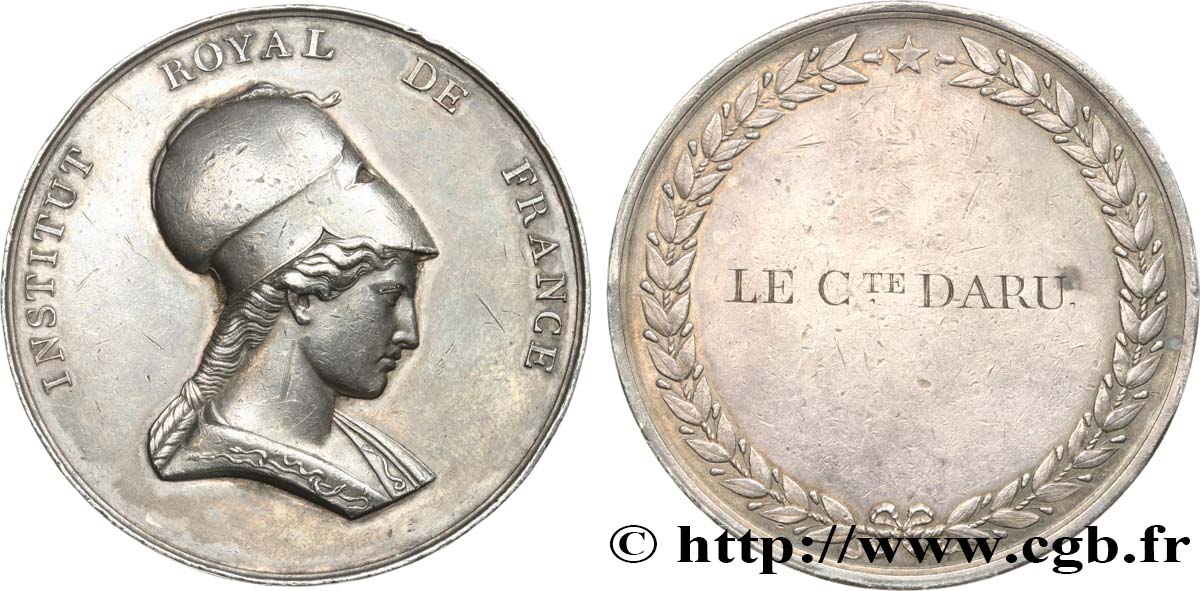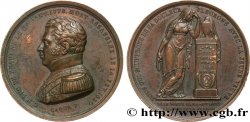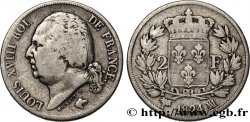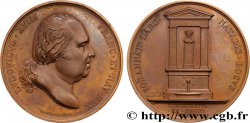fme_549327 - LOUIS XVIII Médaille de récompense, Institut royal de France, décernée au Comte Daru
недоступный.
Товар уже продан в нашем интернет-магазине (2020)
Цена: : 100.00 €
Товар уже продан в нашем интернет-магазине (2020)
Цена: : 100.00 €
Тип Médaille de récompense, Institut royal de France, décernée au Comte Daru
Дата: n.d.
Металл: silver
Диаметр: 49 mm
Ориентация осей монеты: 12 h.
Гравер DUMAREST Rambert (1750-1806)
Вес: 60,20 g.
Век: lisse
Пуансон: sans poinçon
Комментарии о состоянии
Patine grise hétérogène ayant été anciennement nettoyé. Les marques du nettoyage sont surtout visibles au revers. Présence de coups et rayures
Лицевая сторона
Аверс: легенда: INSTITUT ROYAL DE FRANCE.
Аверс: описание: Buste féminin à droite, casqué à l’antique.
Обратная сторона
Реверс: легенда: LE C.TE DARU..
Реверс: Описание: Légende en 1 ligne dans une couronne de lauriers terminée d’une étoile.
Комментарий
Cette médaille a été remise au Comte Daru, né Pierre-Antoine-Noël-Mathieu Bruno Daru en 1767 et mort en 1829. On retrouve d’ailleurs le discours de M. le baron CUVIER pour ses funérailles le 11 septembre 1829 sur le site Internet de l’Académie Française : http://www.academie-francaise.fr/funerailles-de-m-le-comte-daru . Pierre Antoine Daru fut fait Comte sous Napoléon Ier. Il était homme d’état et homme de lettres. La page Wikipedia de ce personnage est intéressante et cite quelques ouvrages de référence.
Bien que non signée, cette médaille peut-être rapprochée des médailles en argent ou en or signées DUMAREST. F. (Rambert Dumarest, né à Saint-Étienne le 17 septembre 1750 et mort le 4 avril 1806 est un médailleur français).
L'Institut de France est une institution académique française créée le 25 octobre 1795, siégeant dans l'ancien bâtiment du collège des Quatre-Nations situé au n° 23 quai de Conti dans le 6e arrondissement de Paris..
Bien que non signée, cette médaille peut-être rapprochée des médailles en argent ou en or signées DUMAREST. F. (Rambert Dumarest, né à Saint-Étienne le 17 septembre 1750 et mort le 4 avril 1806 est un médailleur français).
L'Institut de France est une institution académique française créée le 25 octobre 1795, siégeant dans l'ancien bâtiment du collège des Quatre-Nations situé au n° 23 quai de Conti dans le 6e arrondissement de Paris..








 Cообщить об ошибке
Cообщить об ошибке Распечатать страницу
Распечатать страницу Отправить мой выбор
Отправить мой выбор Задать вопрос
Задать вопрос Consign / sell
Consign / sell
 Информация
Информация



